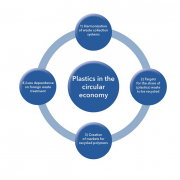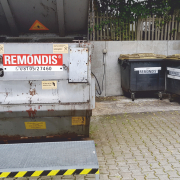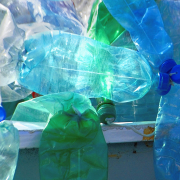Waste-to-Hydrogen: A Valid Tool to Help Decarbonise the EU Industry
ESWET expresses its support to the draft gas package presented within the second batch of the “Fit for 55 package”, since it recognises the important decarbonisation potential of low-carbon hydrogen which can be generated by Waste-to-Hydrogen technologies.
The proposal for a new “EU hydrogen and gas markets decarbonisation package” rightly seizes the urgence of up-taking all available solutions, especially renewable and low-carbon hydrogen, to speed up Europe’s decarbonisation efforts.
More support towards hydrogen generation will allow the EU industrial sector to shift away from fossil fuels, including natural gas, in the years to come. Waste-to-Energy plants demonstrate that they can be part of the picture, as they are able to generate hydrogen from non-recyclable waste.
“Waste-to-Energy is an essential feature of the EU waste management framework, as it treats non-recyclable waste that would otherwise be landfilled. The Hydrogen generated by Waste-to-Energy plants has the unique feature of being partly renewable and partly low-carbon, and comes with the advantage of being produced in urban areas in proximity to consumers”, commented Kai Lieball, Chair of the ESWET Working Group on Waste-to-Hydrogen. “That’s why we strongly support Waste-to-Hydrogen as an interesting option for waste management to support the decarbonisation of the EU economy while reinforcing the Circular Economy”.
Waste-to-Hydrogen generation is already up and running in Wuppertal, Germany. There, the Waste-to-Energy plant is able to generate enough hydrogen to power 20 public transports buses (with a goal of 70 buses by 2025), contributing to the decarbonisation of heavy transport vehicles, and avoiding particle matter emissions. Thanks to this process, it is estimated that the city of Wuppertal already saves more than 700 tons of CO2 per year.
In the same direction, the Waste-to-Energy plant in Créteil, Paris will start a production and distribution capacity of 500 kg/day of hydrogen by the end of 2022, with plans to move towards a capacity of one tonne of hydrogen per day. The hydrogen will fuel heavy vehicles such as public buses and household waste trucks.
A recent study by Ecoprog and CEWEP shows that the interest in hydrogen is high in the Waste-to-Hydrogen market. Around 90% of the EU Waste-to-Energy operators interviewed declared they are either already considering plans for production or following the topic closely. This attitude follows the expected high-demand across sectors in Europe for renewable and low-carbon hydrogen in the following years and proves Waste-to-Energy’s rightful aim to be at the forefront of decarbonisation strategies.
Source: ESWET (Brussels, December 16, 2021)









